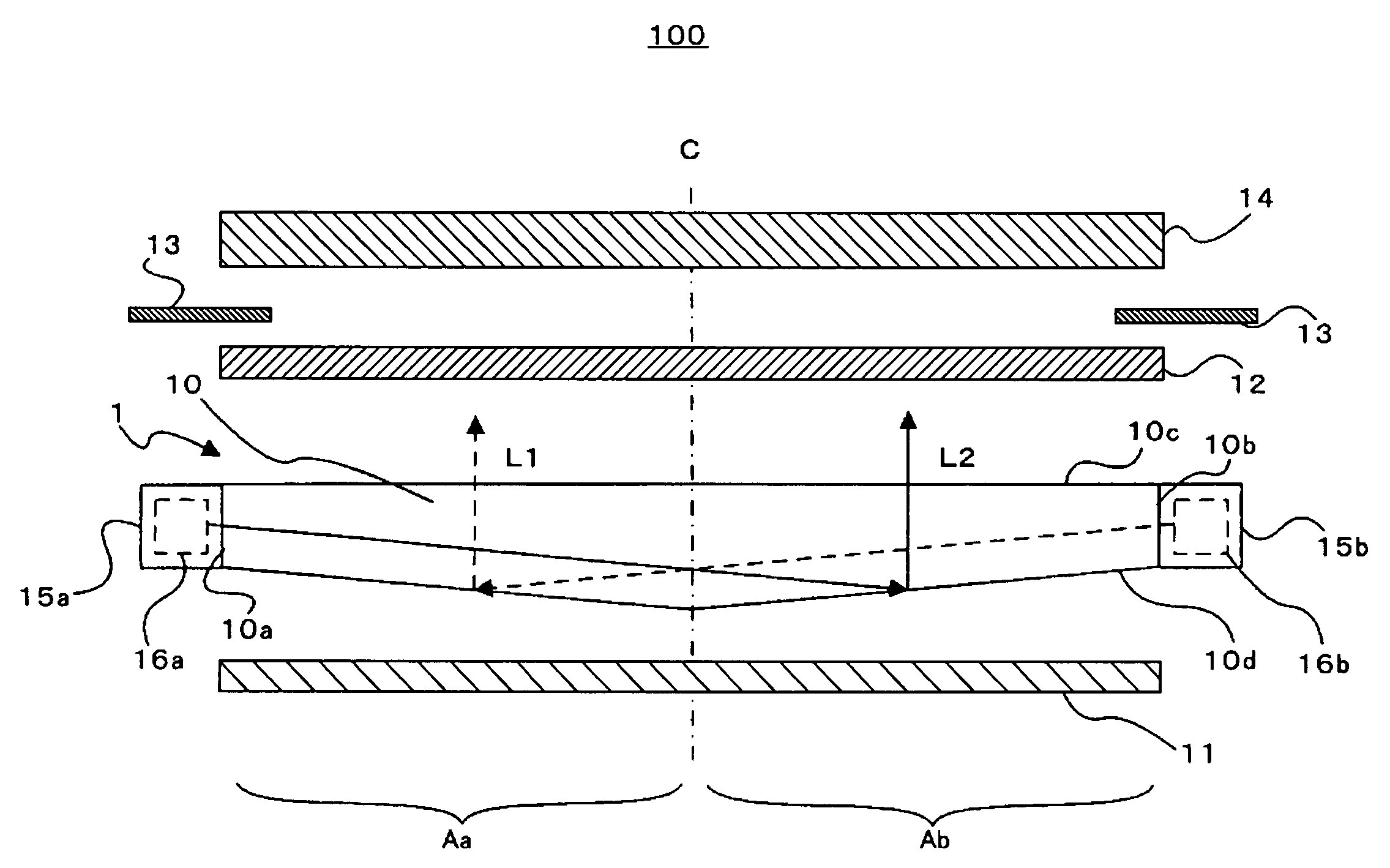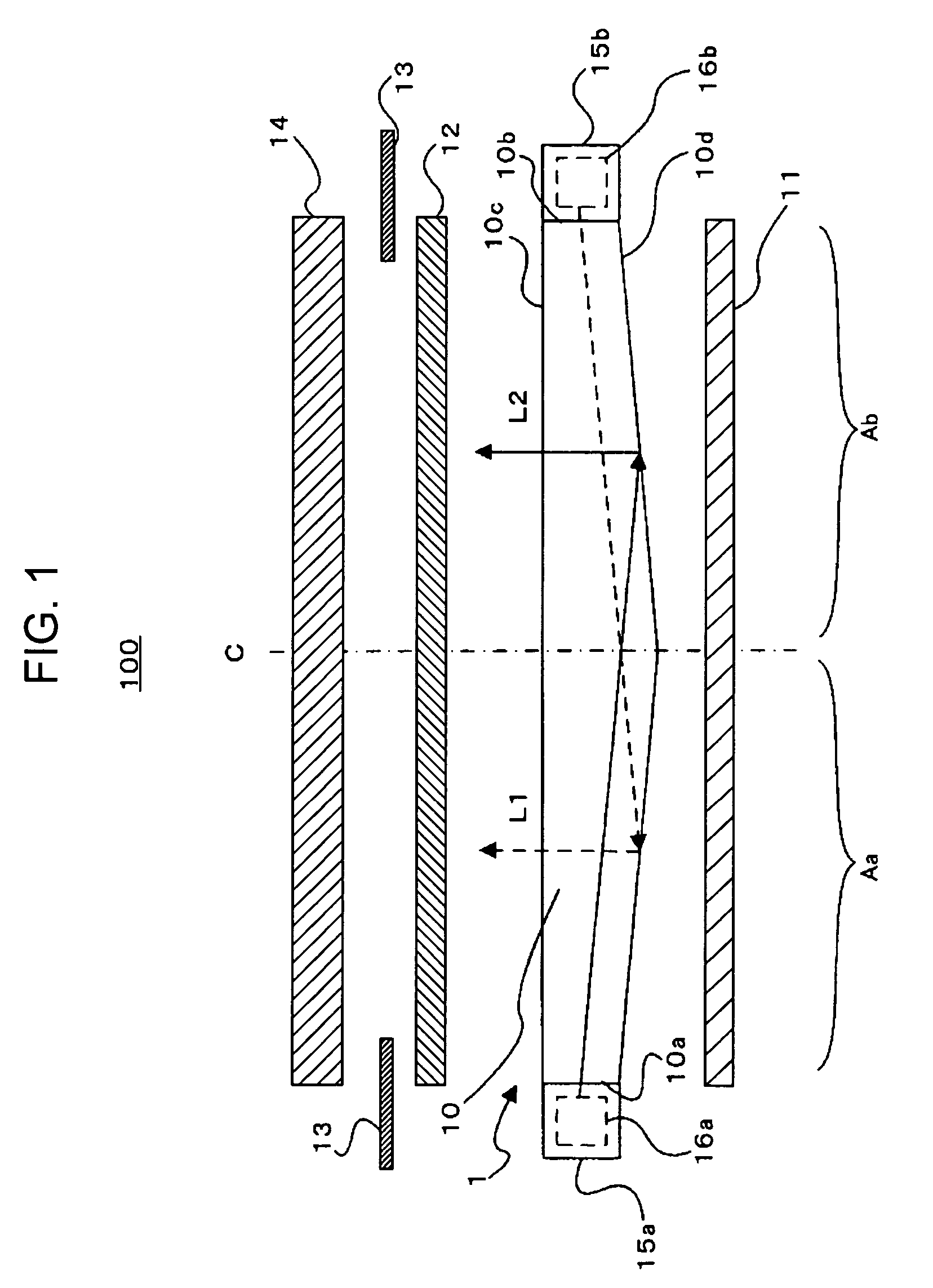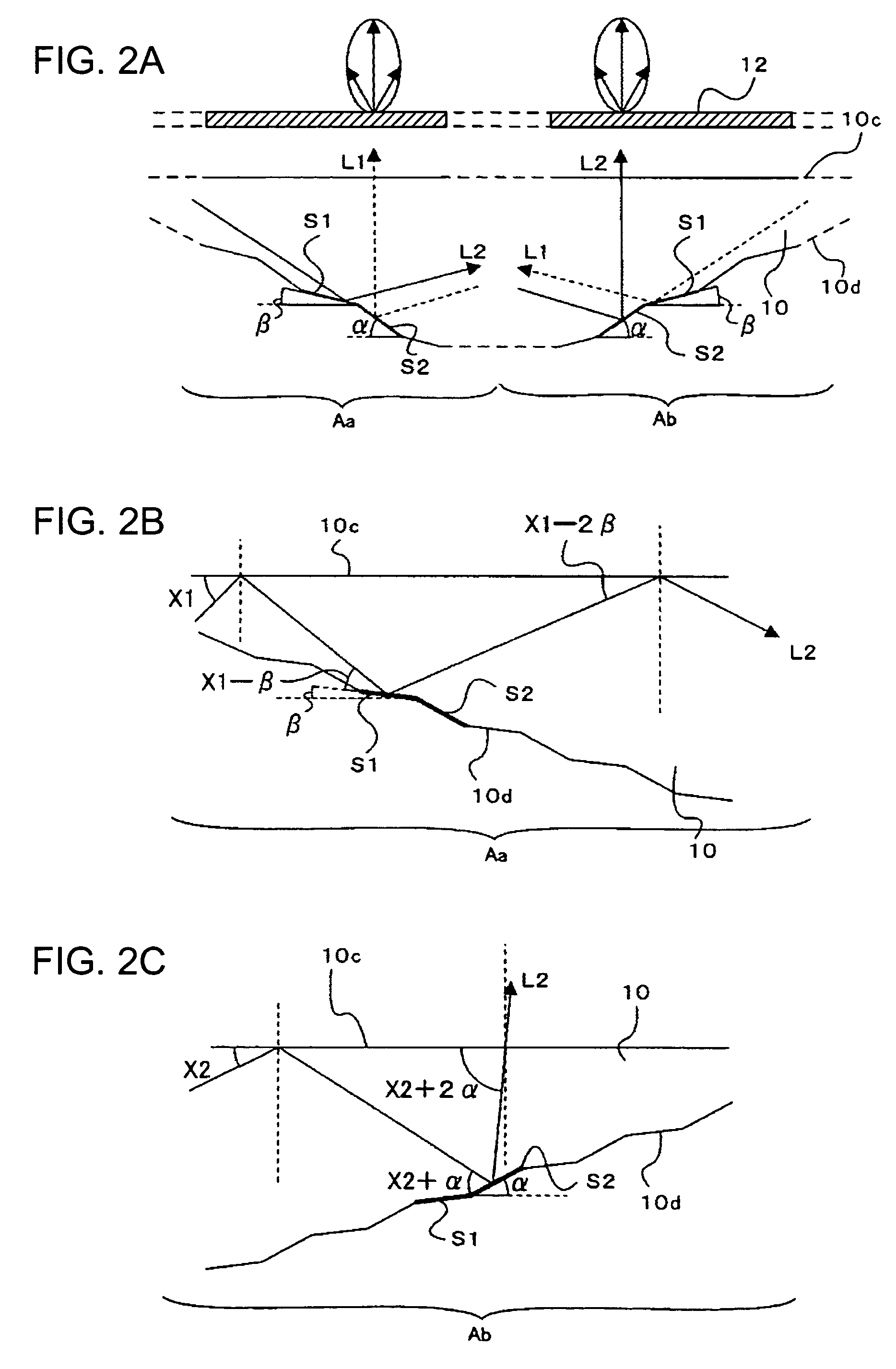Optical waveguide, illumination device, electro-optical device, and electronic apparatus
a technology of illumination device and optical waveguide, which is applied in the direction of lighting and heating apparatus, instruments, and high-level techniques, can solve the problems of insufficient light diffusibility of light generated in a region near point light sources such as leds, and increase consumption of power, so as to suppress the influence of so-called ‘light irregularities', bright illumination, and low power consumption
- Summary
- Abstract
- Description
- Claims
- Application Information
AI Technical Summary
Benefits of technology
Problems solved by technology
Method used
Image
Examples
first embodiment
[0037]FIG. 1 is a lateral view schematically showing the structure of a liquid crystal display device 100 in which an illumination device according to a first embodiment of the invention is applied. Even though individual constituent elements are shown separated by gaps for convenience of description in FIG. 1, actually, they constitute a liquid crystal display device 100 in a state in which they overlap in a vertical direction of the drawing.
[0038]The liquid crystal display device 100 includes an illumination device 1. A diffusion sheet 12 and a liquid crystal display panel 14 are provided on the illumination device 1, and a reflection sheet 11 is provided below the illumination device 1. The liquid crystal display panel 14 corresponds to a display panel of a cellular phone or the like, and an optical waveguide 10 has a display area, which is almost equal to a light-emitting area of the liquid crystal display panel 14. In addition, the structure of the liquid crystal panel in the i...
second embodiment
[0073]Next, an illumination device according to a second embodiment of the invention will be described. In the illumination device according to the first embodiment, the optical waveguide 10 is constructed such that the thickness thereof is the largest at the location of the boundary line C and gradually decreases from the location of the boundary line C toward the light incident end faces located at both ends. In contrast, in the illumination device according to the second embodiment, the optical waveguide is entirely ‘wedge-shaped’ and is formed such that the thickness thereof gradually decreases from one light incident end face toward the other light incident end face. Hereinafter, the illumination device according to the second embodiment will be described with reference to FIG. 6.
[0074]FIG. 6A is a lateral view showing the structure of the illumination device 3 according to the second embodiment of the invention. As shown in FIG. 6A, the illumination device 3 has the wedge-shap...
first modification
[0087]The above-mentioned liquid crystal display device 100 has a structure in which only the diffusion sheet is disposed between the liquid crystal panel and the illumination device. However, according to the structure, the inclination angle α in the illumination device 1, the inclination angles α and α′ in the illumination device 2, and the inclination angles α, α1, and α2 in the illumination device 3 are respectively set in a range of 35° to 50°, because it is necessary for the light to be emitted in a substantially vertical direction from the optical waveguide. For this reason, it is required that the reflective surface of the optical waveguide has a relatively steep shape in each of the illumination devices 1 to 3. Therefore, in the first modification, a prism sheet is disposed between the liquid crystal panel and the diffusion sheet in the liquid crystal display device 100. The prism sheet has a surface with unevenness of which the section is substantially triangular formed th...
PUM
 Login to View More
Login to View More Abstract
Description
Claims
Application Information
 Login to View More
Login to View More - R&D
- Intellectual Property
- Life Sciences
- Materials
- Tech Scout
- Unparalleled Data Quality
- Higher Quality Content
- 60% Fewer Hallucinations
Browse by: Latest US Patents, China's latest patents, Technical Efficacy Thesaurus, Application Domain, Technology Topic, Popular Technical Reports.
© 2025 PatSnap. All rights reserved.Legal|Privacy policy|Modern Slavery Act Transparency Statement|Sitemap|About US| Contact US: help@patsnap.com



